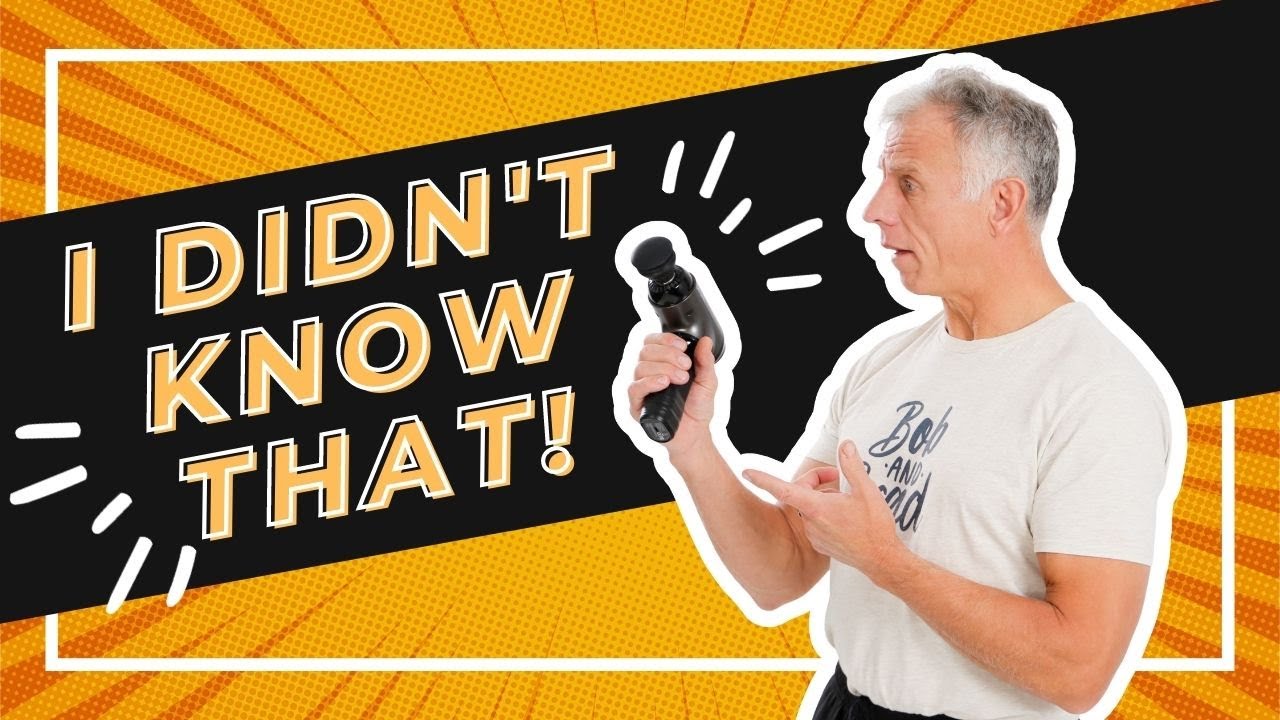In recent years, massage guns have become incredibly popular fitness and recovery tools. These handheld devices promise to relieve muscle tension, improve circulation, and speed up recovery. While they can be effective for many people, physical therapists Bob and Brad warn that there are specific situations where massage guns should never be used.
Why You Should Be Careful With Massage Guns
Massage guns can be powerful devices, particularly the higher-end models. Even for muscular, athletic individuals, improper use can lead to discomfort and potential injury. Before purchasing a massage gun for yourself or as a gift, it's important to understand these safety concerns.
10 Areas Where You Should Never Use a Massage Gun
1. The Neck
The neck is the number one area to avoid. Even for very muscular individuals like football players, using a massage gun on the neck can cause serious problems. There's limited soft tissue protection in this area, meaning the intense vibration directly impacts bones, nerves, and blood vessels.
Why it's dangerous: There's insufficient soft tissue to buffer the impact, and you could damage sensitive structures.
What to do instead: You can safely use the massage gun on your upper traps (shoulders), but avoid the neck area completely.
2. Over Arteries and Nerves
Areas where major arteries and nerve bundles run close to the surface should be avoided.
Danger zones include:
- The carotid artery in your neck
- The armpit (axillary area), which contains an artery, vein, and nerve bundle
- The femoral crease (groin area) which has nerve bundles and lymph nodes
Why it's dangerous: Aggressive massage on these areas can damage nerves or blood vessels.
Safety tip: Avoid any area where you can feel a pulse. Stay on muscle bellies instead.
3. Varicose Veins
If you have varicose veins, avoid using a massage gun on these areas.
Why it's dangerous: Varicose veins have valves that are already not working properly. The intense percussion of a massage gun won't improve their function and could potentially make the condition worse.
4. Open Wounds or Fragile Skin
This might seem obvious, but it's worth mentioning: don't use a massage gun on cuts, burns, or areas with fragile skin.
Why it's dangerous: You can break down the skin further or delay healing.
Rule of thumb: Only use massage guns on healthy, intact skin.
5. Bony Areas
Avoid using massage guns directly on bones.
Why it's dangerous: There's no benefit to massaging bones, and it can be painful and potentially harmful.
Modification: If you need to work muscle tissue near bones, use an air-cushioned head attachment that provides some buffer.
6. Infected Areas
Never use a massage gun on an infected area, even if you think increased circulation might help.
Why it's dangerous: It could spread the infection or worsen inflammation.
7. Cancer Sites
Areas affected by cancer should never be treated with a massage gun.
Why it's dangerous: Massage could potentially encourage cancer cell movement or growth.
8. Recent Joint Replacements
If you've had a recent hip or joint replacement, avoid using a massage gun near the surgical site.
Why it's dangerous: It could interfere with healing or damage the prosthesis.
When is it safe? Consult with your surgeon, but generally waiting at least a year post-surgery is advised. Even then, focus on areas above or below the replacement, not directly on it.
9. Abdominal Area
The abdomen is not an appropriate area for massage gun use.
Why it's dangerous: Internal organs aren't protected for this type of deep percussion.
10. Numb Areas
If you have areas with reduced sensation (such as from neuropathy due to diabetes), avoid using massage guns there.
Why it's dangerous: Without proper feedback, you might be causing damage without realizing it.
Remember: Pain is your body's warning system. If you can't feel properly, you won't know when to stop.
When Massage Guns Are Beneficial
While this article focuses on dangers, it's worth noting that massage guns can be highly effective for many conditions when used properly. They're particularly good for:
- Treating fascial restrictions
- Relieving muscle tension
- Improving circulation in healthy tissues
- Enhancing recovery after workouts
The Bottom Line
Massage guns can be fantastic tools for the right situations, but they're not appropriate for every body part or condition. By avoiding these 10 danger areas, you can safely enjoy the benefits of percussion therapy without risking injury or complications.
Always start with the lowest setting when trying a massage gun for the first time, and remember that more pressure isn't always better. When in doubt, consult with a physical therapist or healthcare provider about the safest way to use your massage gun for your specific needs.
Recommended Massage Guns for Safe Recovery
The Ultimate Compact Massage Gun with Dual Therapy
The C2 Pro combines percussion therapy with innovative heat and cold treatment options in a compact design. With moderate power and multiple speed settings, this versatile massage gun works effectively for most users.
The Best Mini Massage Gun for On-The-Go
Don't let its mini size fool you—the Q2 Pro delivers decent power and dual heat/cold therapy in an ultra-portable package. Ideal for on-the-go recovery, this lightweight device fits easily in gym bags or purses while maintaining enough strength for effective muscle release. Perfect for travelers and busy professionals.
The Most Powerful Massage Gun for Professional Recovery
The D6 Pro offers exceptional power that rivals professional devices at an accessible price point. With industry-leading stall force and amplitude, it's designed for deep tissue work on dense muscles. Athletes and bodybuilders will appreciate its professional-grade performance for serious recovery needs.
FAQs About Massage Gun Safety
Q: Can I use a massage gun every day? A: For most healthy individuals, daily use on appropriate areas is fine, but it's best to give tissues a chance to recover between sessions.
Q: How long should I use a massage gun in one area? A: Generally, 1-2 minutes per muscle group is sufficient. Longer isn't necessarily better.
Q: Are cheaper massage guns safe to use? A: Quality varies widely. Look for reputable brands with safety features and multiple head attachments for versatility.
Q: Can children use massage guns? A: With supervision and on appropriate settings, older children may benefit, but always consult with a pediatrician first.
Q: Should massage guns hurt during use? A: No. You should feel pressure and perhaps mild discomfort, but never pain. If it hurts, stop immediately.



Share:
Massage Gun Heads or Attachments: Which One Should You Use?
Massage Guns: Why They Work & How To Use